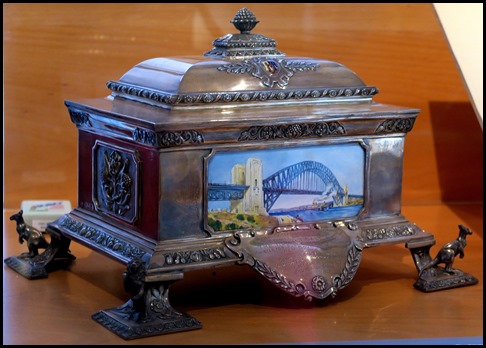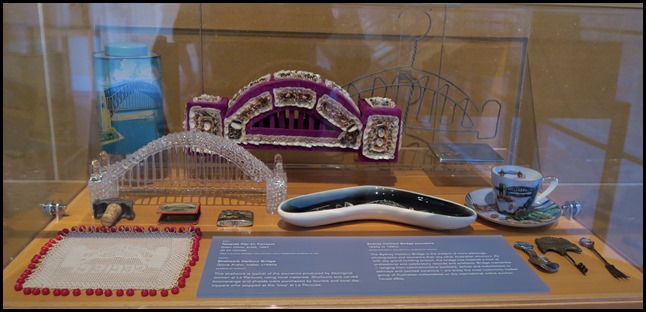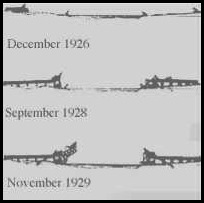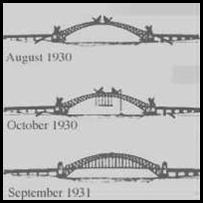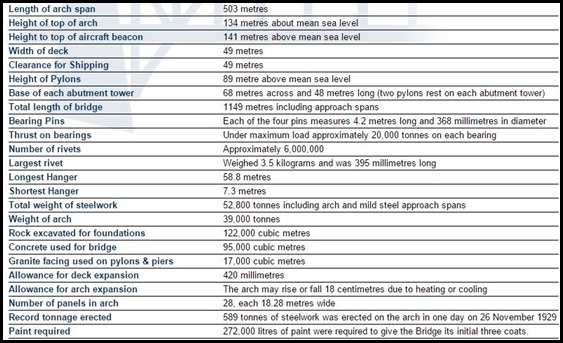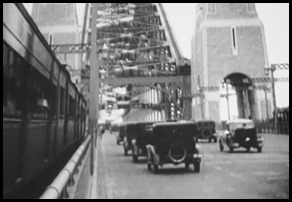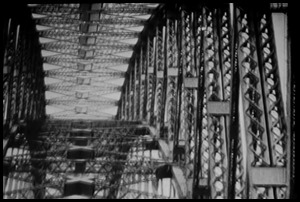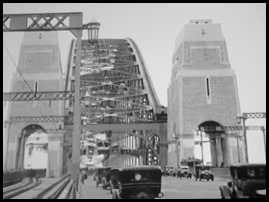SHB History

|
Sydney Harbour Bridge –
History
 Sydney is known to the world the
instant the Opera House and the Bridge are seen, we were no different on
Beez Neez and really felt we had arrived in Australia as they came into
view. Today at the Museum of Sydney we looked at hundreds of old photographs
taken during the construction of the bridge and have put some of them with the
history taken from the bridges’ own website.
The Sydney Harbour Bridge is one of
the major landmarks of Sydney, Australia, connecting the Sydney central business
district (CBD) with the North Shore commercial and residential areas, both of
which are located on Sydney Harbour. The dramatic water vista of the bridge
together with the nearby Sydney Opera House is an iconic image of both Sydney
and Australia. It was opened on the 19th of March 1932. The bridge is
affectionately known as "the Coathanger" by many Sydney residents on account of
its arch-based design. It was the city's tallest structure until 1967. One
source of disappointment for those who had built the bridge was the discovery
that the Bayonne Bridge in the United States, opened on the 15th of November 1931, was 700
mm longer. However, that fact was not generally known, and millions of
Australian school children throughout the next fifty years were taught,
erroneously, that the Sydney Harbour Bridge was the world's longest single-arch
bridge. However, it remains the world's largest (but not the longest) steel arch
bridge.
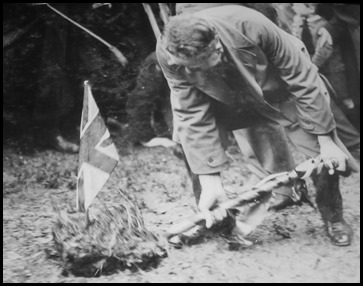 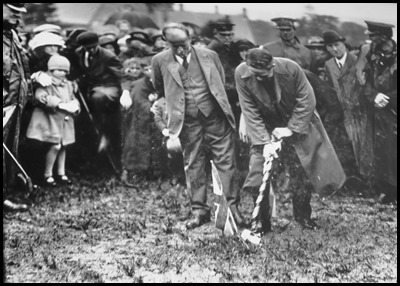 History:-
Souvenir Casket: Presented to R.T. Ball by Dorman, Long & Co. at the laying of the foundation stone of the southern abutment tower, March 1925. Made by Goldsmiths’ & Silversmiths’ Co. Ltd. in silver, enamel. The interior is silver gilt, silk, wood and leather detail.
Memorabilia of the time including a ‘coathanger’.
Sydney Harbour Bridge: The building of the bridge coincided with the construction of a system of underground railways in Sydney's CBD, known today as the City Circle, and the bridge was designed with this in mind. The bridge was designed to carry six lanes of road traffic, flanked by two railway tracks and a footpath on each side. Both sets of rail tracks were linked into the underground Wynyard railway station, on the south side of the bridge, by symmetrical ramps and tunnels. The eastern-side railway tracks were used to carry trams from the north into a terminal within that station.
Construction: The building of the bridge was under the management of Bradfield. Three other persons were involved in the bridge's design and construction: Laurence Ennis, the engineer-in-charge at Dorman Long and Co was the main supervisor (Bradfield visited occasionally throughout the project, and in particular at the many key stages of the project, to inspect progress and make managerial decisions); Edward Judge was Chief Technical Engineer of Dorman Long and later became President of the British Iron and Steel Federation; Sir Ralph Freeman was hired by the company to design the accepted model in further detail. Later a bitter disagreement broke out between Bradfield and Freeman as to who actually designed the bridge. Another name connected with the bridge's design is that of Arthur Plunkett. The construction project itself began in 1923, with the demolition of 800 homes. The owners of these homes received compensation, but their occupants did not. The first stage of the bridge project was the building of two worksheds at Milson's Point to assist in building the bridge - the light and heavy workshops. Their purpose was to build the bridge's many parts. The Arch being constructed. Painting by Grace Cossington Smith (1926).The first sod for the bridge was turned that same year. In January 1925, the excavations to build the abutments and approach spans began. In October 1925, the building of the abutments and approach spans themselves began, and these were completed in September 1928. Construction of the bridge itself began in December 1928, with the construction of the bridge parts in the workshops. Construction of the arch of the bridge began in 1929, with two separate teams building the arch on each side using creeper cranes. The first panel was erected on the southern side in March 1929. The southern end of the bridge was worked on a month ahead of the northern end, in order to detect any errors and to ensure that they did not happen on the northern side. The arch was successfully joined on the afternoon of 19 August 1930. Ennis and four associates personally witnessed this whilst standing on top of the bridge. Following a parting that occurred due to the contracting of metal in the evening, the ends were rejoined at 10 pm, and have remained joined since then. The road and the two sets of tram and railway tracks were completed in 1931. Power and telephone lines, and water, gas and drainage pipes were also all added to the bridge in that year. On the 19th of January 1932, the first test train, a steam locomotive, safely crossed the bridge. About ninety others also crossed the bridge in the months that followed as part of a series of tests to ensure the bridge's safety. The construction worksheds were demolished after the bridge was completed, and the land that they were on is now occupied by Luna Park and the North Sydney swimming pool. The standards of industrial safety during construction were poor by today's standards. Sixteen workers died during construction, mainly from falling off the bridge. Several more were injured from unsafe working practices undertaken whilst heating and constructing its rivets, and deafness experienced by many of the workers in later years was blamed on the project. The total financial cost of the bridge was ten million and fifty seven thousand, one hundred and seventy pounds, seven shillings and nine pennies. This was not paid off in full until 1988.
Opening of the bridge: The bridge was formally opened on the 19th of March 1932. The opening itself became an event in its own right. Amongst those who attended and gave speeches were the State Governor, Sir Philip Game and the Minister for Public Works, and Ennis. The Premier of NSW, Labour politician Jack Lang, intended to formally open the bridge by cutting a ribbon at its southern end. However, just as he was about to do so, instead Captain Francis de Groot moved forward on a horse and slashed the ribbon with a sword, declaring the bridge to be open. He was promptly arrested and later convicted of offensive behaviour. The ribbon itself was hurriedly retied and Lang performed the opening ceremony. After he did so, there was a 21-gun salute and a RAAF fly-past. It was later revealed that de Groot was not a member of the regular Army. He was in fact a member of a 1930’s right-wing paramilitary group called the New Guard, opposed to Lang's leftist policies. He had been impersonating a member of the military present that day on the bridge. The incident itself was one of several that Lang had with the New Guard in that year. A similar ribbon-cutting ceremony on the bridge's northern side by North Sydney's mayor, Alderman Primrose, was carried out without incident. It was later discovered that Primrose was also a New Guard member, but his role in and knowledge of the de Groot incident, if any, are unclear. A message from a primary school in Tottenham, 550 km away in rural NSW, arrived at the bridge on the day and was presented at the opening ceremony. It had been carried all the way from Tottenham to the bridge by relays of school children, with the final relay being run by two children from the nearby Fort Street Boys' and Girls' school. Other features of the opening ceremony included a vast display of floats and marching bands - one quite remarkable by Depression standards. The public was allowed to walk on the highway. There had been numerous preparatory arrangements. On the 14th of March 1932, three postage stamps were issued to commemorate the imminent opening of the bridge. One of these stamps, with a face value of five shillings, is worth several hundred dollars today. Several songs were also composed in advance for the occasion. These have now been largely lost or forgotten. The bridge itself was regarded as a triumph over Depression times.
Since the opening, the bridge has been the focal point of much tourism
and national pride. It is Sydney's focal point of New Year and Australia Day
celebrations, with fireworks being set off from the arch. Tragically, it has
also been the scene of about forty suicides, many of which took place within
months of the bridge's opening. In 1958 tram services across the bridge were
withdrawn and the tracks they had used were removed and replaced by two extra
road lanes; these lanes are now the leftmost southbound lanes on the bridge and
are still clearly distinguishable from the original six road lanes. They connect
the bridge to the elevated Cahill Expressway that carries traffic to the Eastern
Distributor. In 1982, the bridge celebrated the 50th anniversary of its opening.
Once again, the bridge was closed to vehicles and pedestrians allowed full
access for the day. The celebrations were attended by Edward Judge who had been
involved in the construction and represented Dorman Long. Australia's
bicentennial celebrations on the 26th of January 1988 attracted large crowds in
the bridge's vicinity.
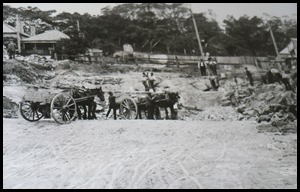 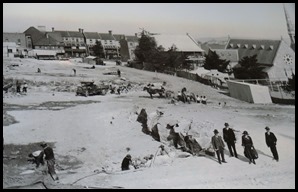 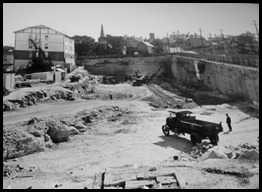 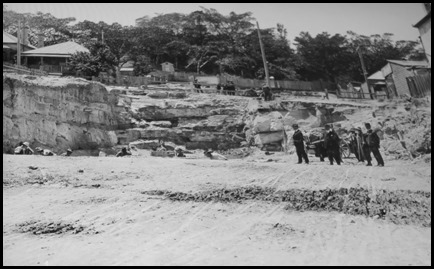 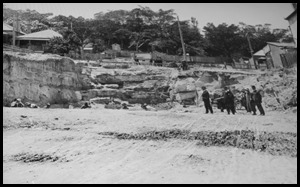 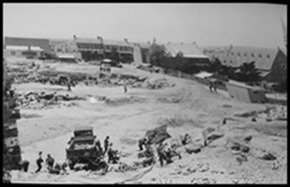 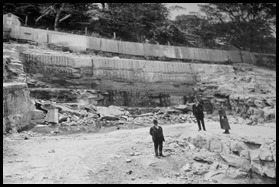 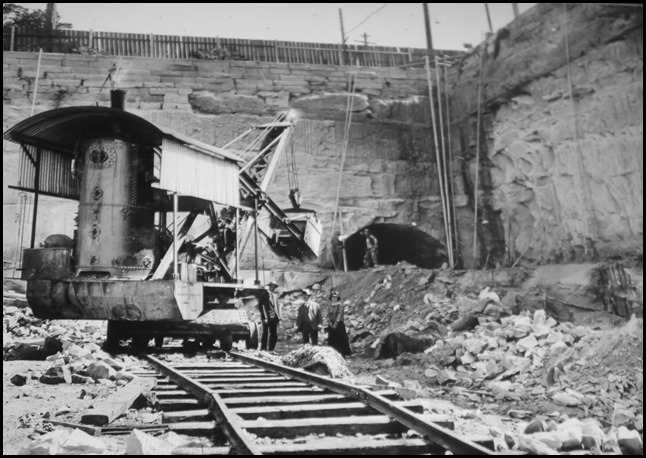 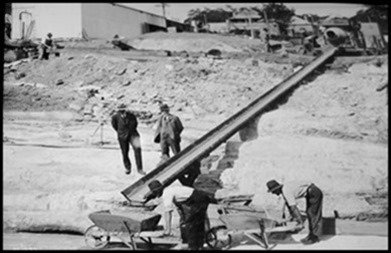 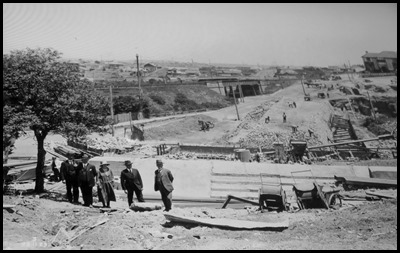 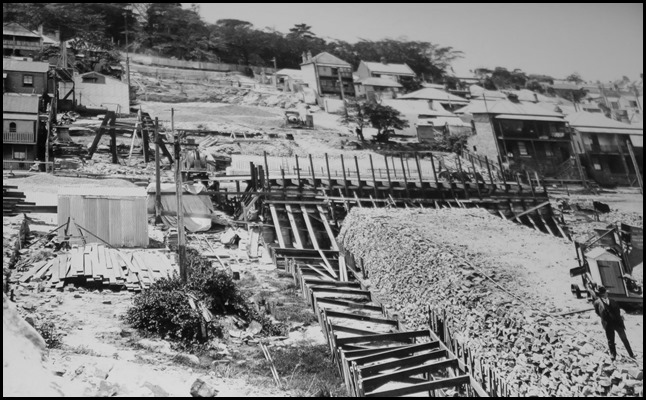 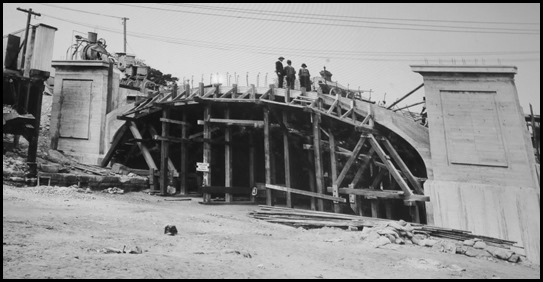 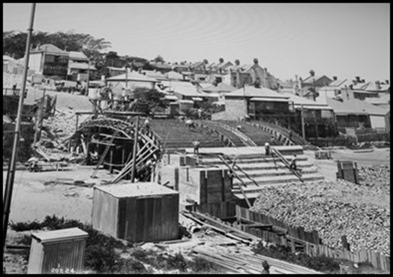 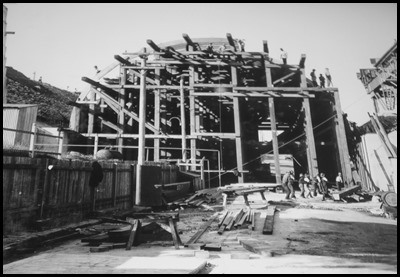 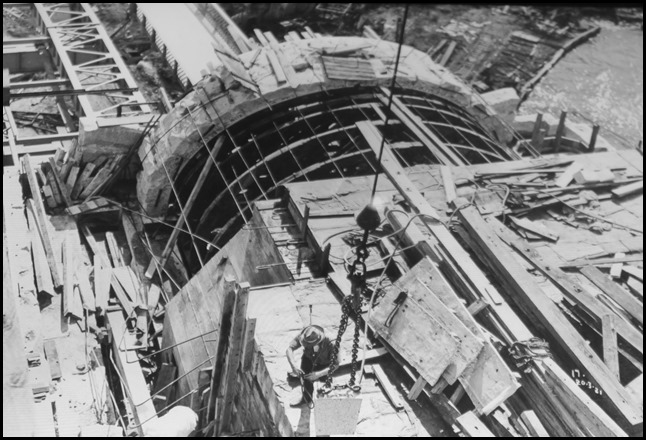 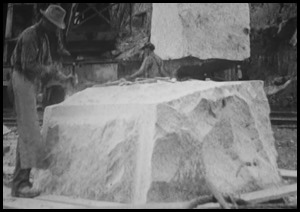 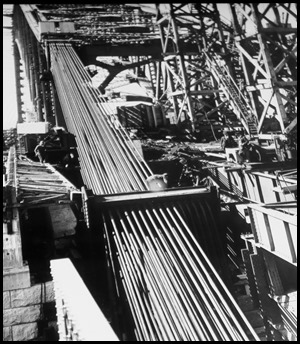 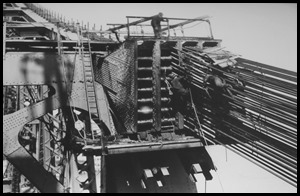 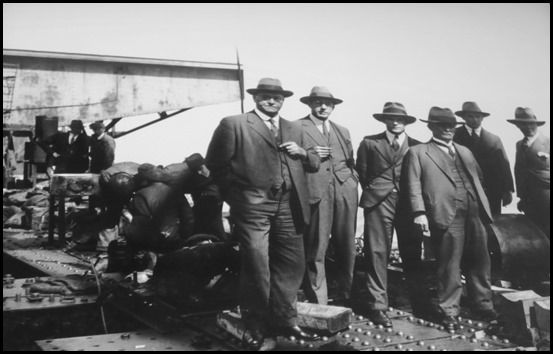 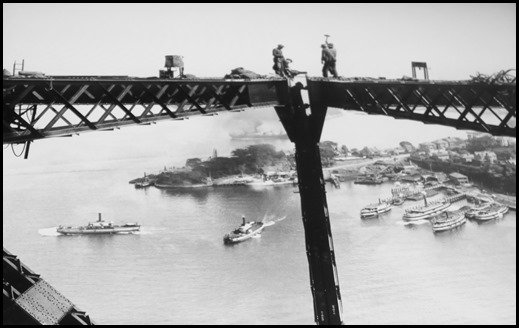 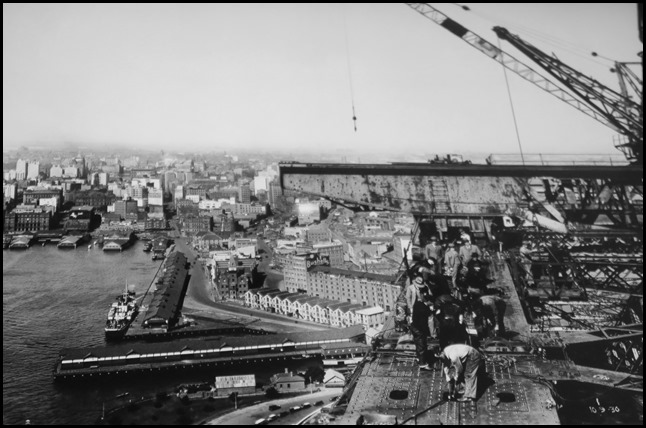 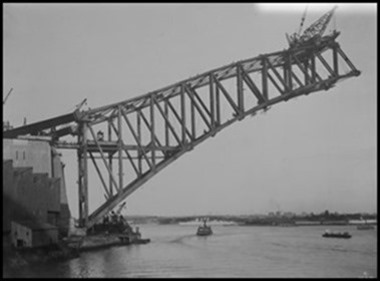 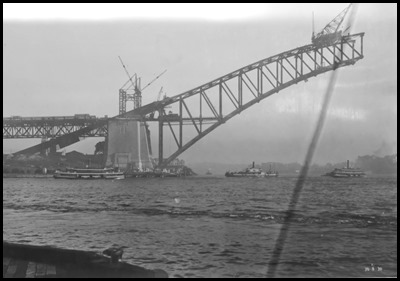 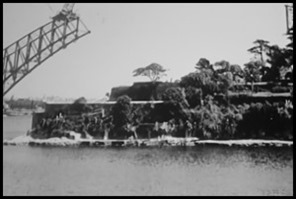 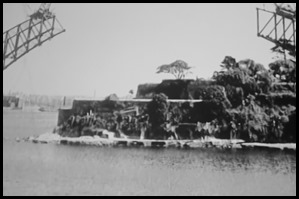 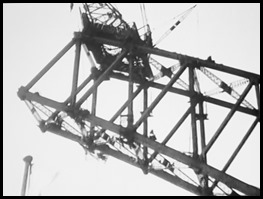 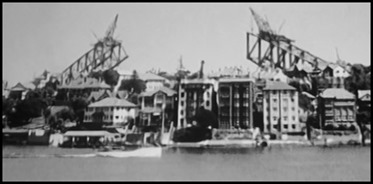 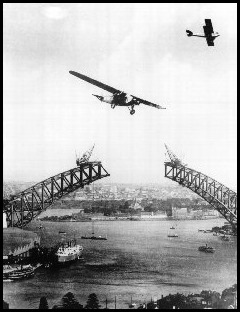 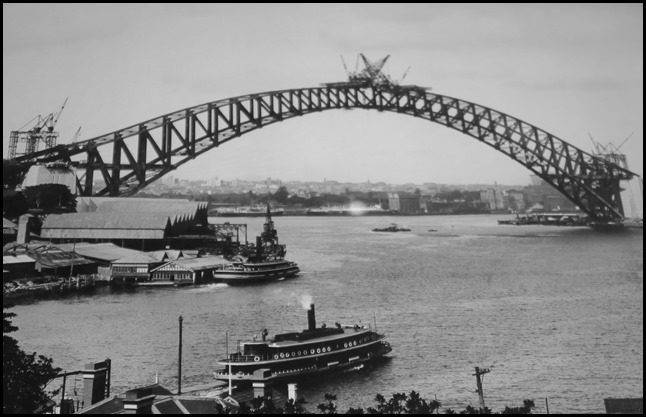 Two half-arches were built out
progressively from each shore, each held back by 128 cables anchored underground
through U-shaped tunnels. Steel members were fabricated in the workshops, placed
onto barges, towed into position on the harbour and lifted up by two 580 tonne
electrically operated creeper cranes, which erected the half-arches before them
as they travelled forward.
 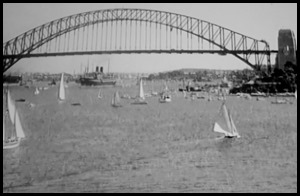 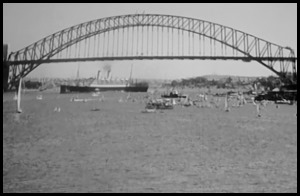 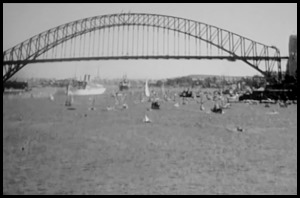 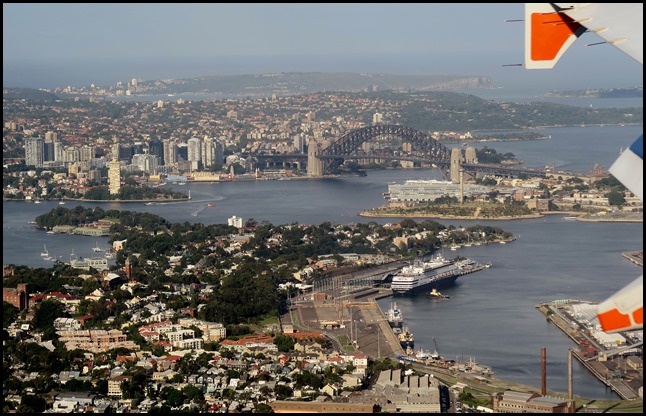 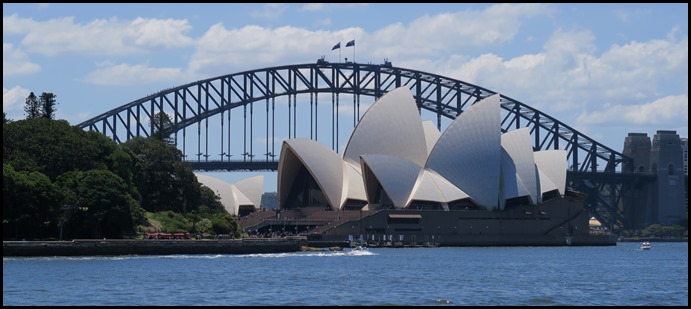
ALL IN ALL A REAL ICON AMAZING CONSTRUCTION FOR ITS ERA
|
